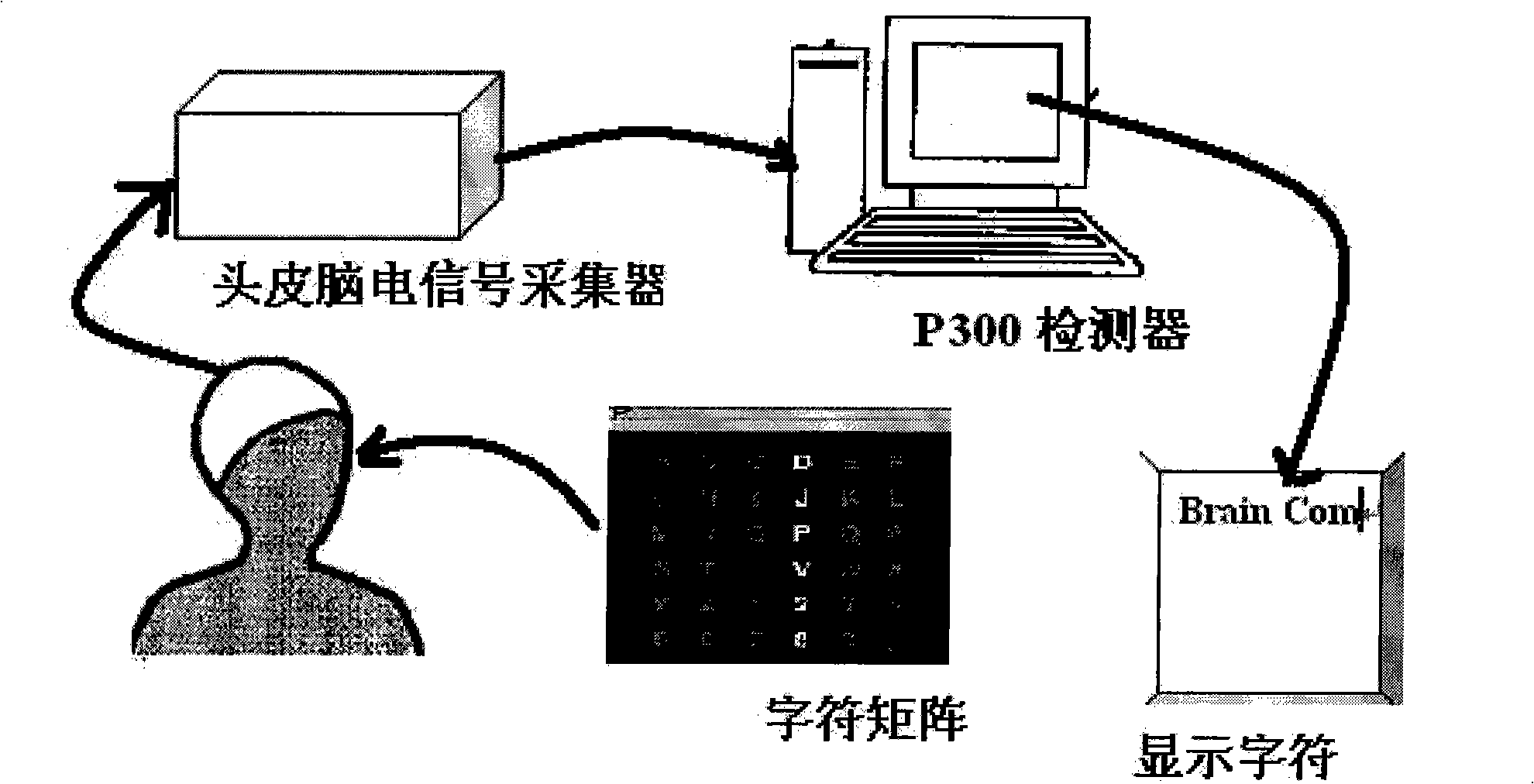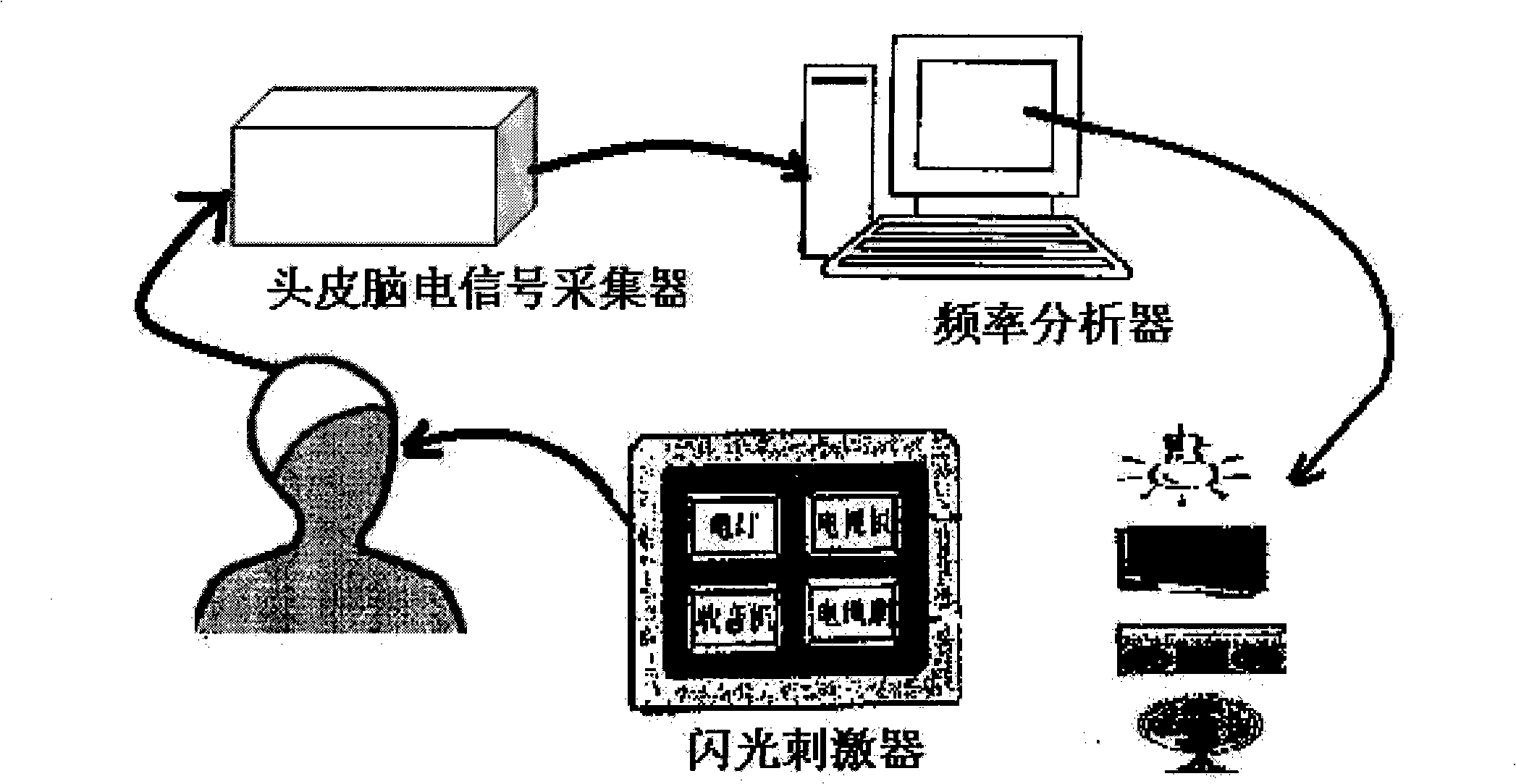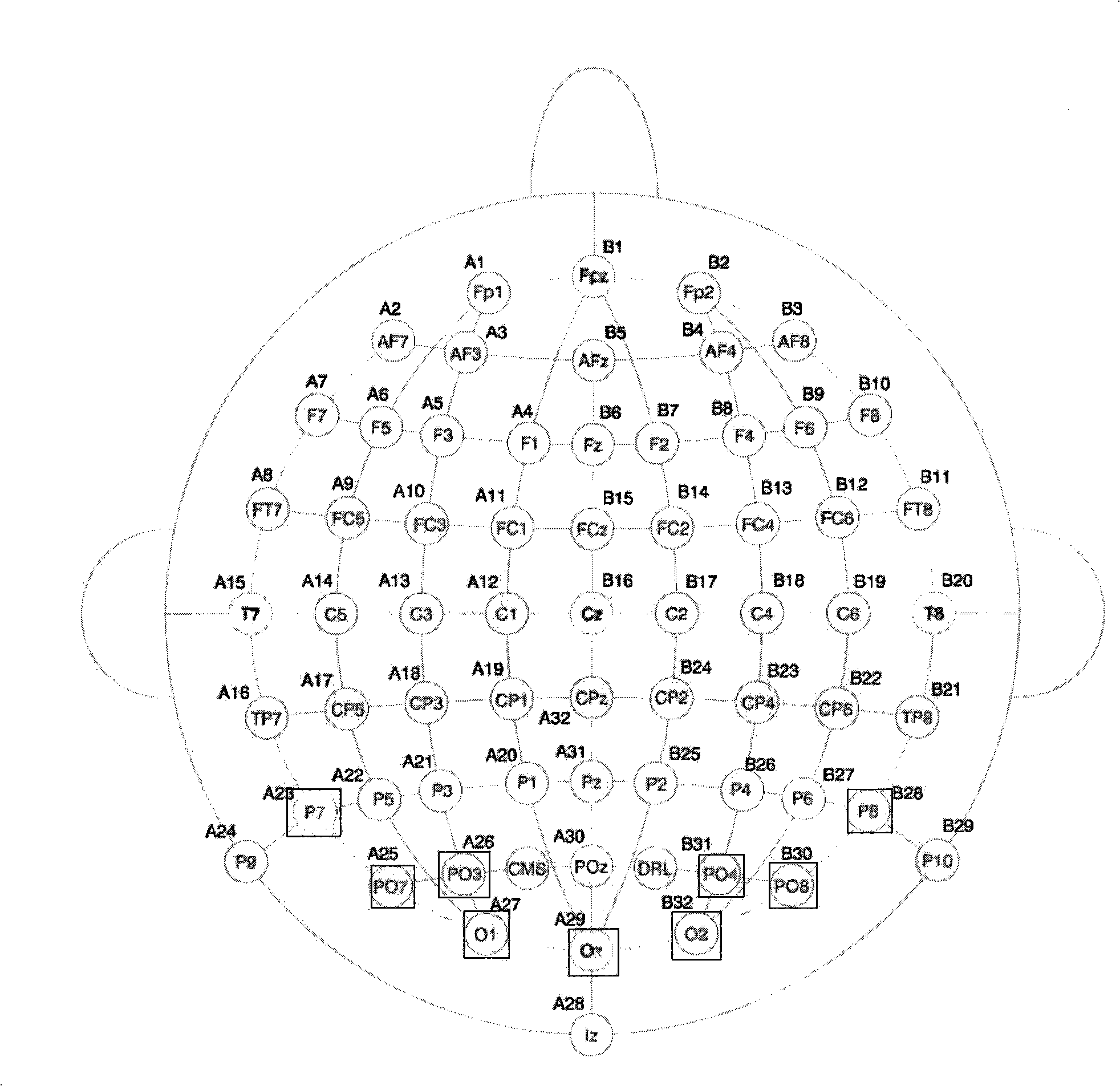Brain machine interface system based on human face recognition specific wave N170 component
A face recognition, brain-computer interface technology, applied in character and pattern recognition, computer parts, mechanical mode conversion, etc., can solve problems such as long distance, achieve the effect of high speed, low error rate and high recognition effect
- Summary
- Abstract
- Description
- Claims
- Application Information
AI Technical Summary
Problems solved by technology
Method used
Image
Examples
Embodiment Construction
[0027] figure 2 Shown is a schematic diagram of the brain-computer interface system based on the steady-state visual evoked potential.
[0028] (1) Picture stimulator
[0029] The picture stimulator presents pictures of faces and objects, and the working state of the human brain is collected by the scalp EEG collector, processed and analyzed by the N170 detector, and converted into picture classification control instructions. Picture stimulators in the system such as Figure 5 As shown, the face or object picture stimuli were randomly presented at intervals of 500 milliseconds, and the order of presentation was random, and each picture was presented for 500 milliseconds.
[0030] (2) Scalp EEG signal collector
[0031] The role of the scalp EEG signal collector is to collect EEG signals that can reflect the working state of the user's brain. The electrodes can detect the potential of the scalp surface, but the multi-channel EEG signals collected by the scalp electrodes are ...
PUM
 Login to View More
Login to View More Abstract
Description
Claims
Application Information
 Login to View More
Login to View More - R&D
- Intellectual Property
- Life Sciences
- Materials
- Tech Scout
- Unparalleled Data Quality
- Higher Quality Content
- 60% Fewer Hallucinations
Browse by: Latest US Patents, China's latest patents, Technical Efficacy Thesaurus, Application Domain, Technology Topic, Popular Technical Reports.
© 2025 PatSnap. All rights reserved.Legal|Privacy policy|Modern Slavery Act Transparency Statement|Sitemap|About US| Contact US: help@patsnap.com



